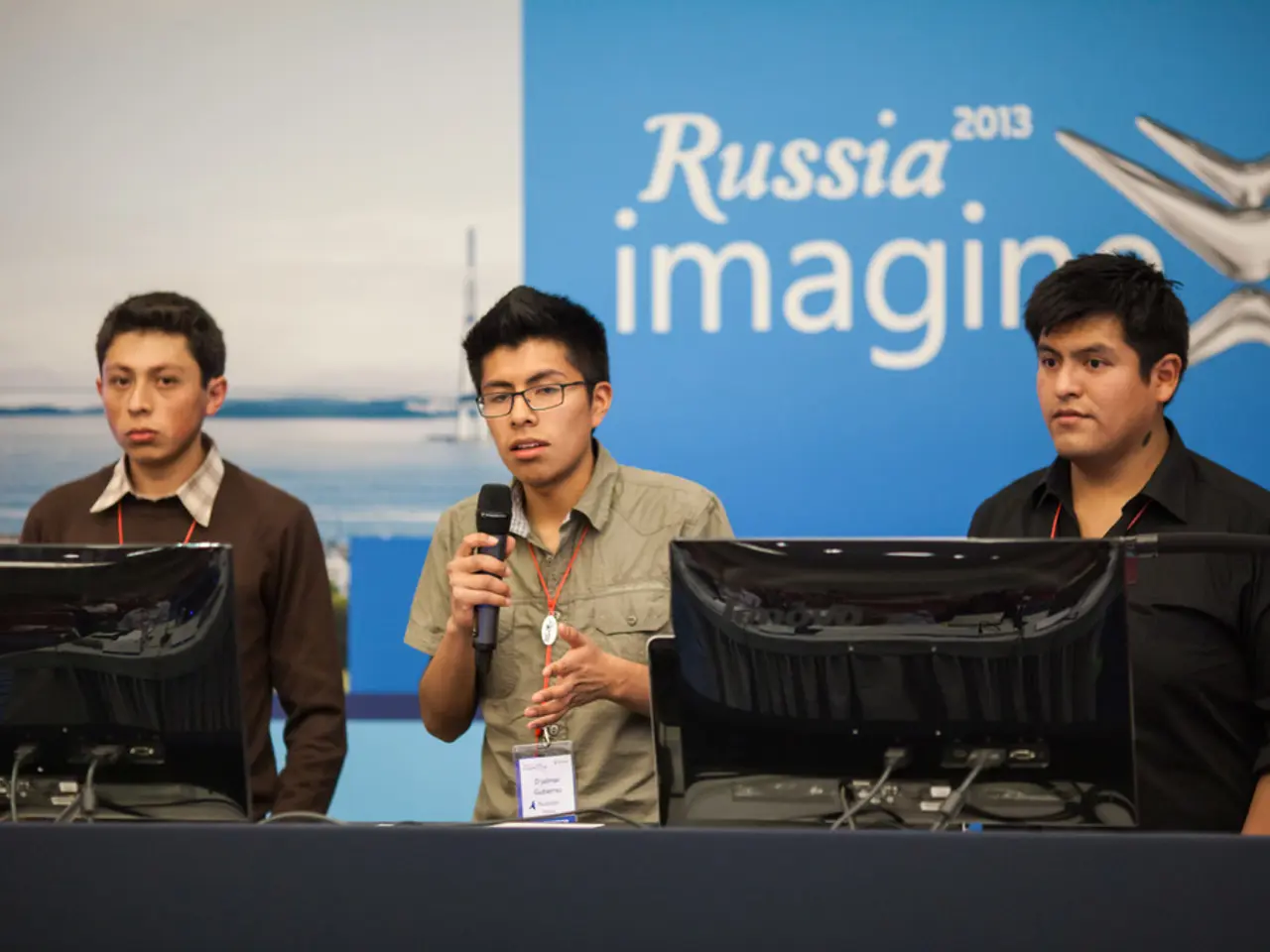Cashless transactions in Russia surge to 86.7%, announced by the Central Bank
## Cashless Payments on the Rise in G20 Countries
The landscape of payments in G20 countries is undergoing a significant transformation, with a growing preference for digital transactions. This shift is primarily driven by the increasing adoption of various payment technologies, such as QR codes and biometrics.
In Russia, for instance, cashless payments account for 86.7% of total transactions and are projected to reach up to 90% by the end of 2025 [1]. This trend is echoed in other countries, where digital payment systems are becoming more prevalent. However, while card payments are still widely used, their share in some countries is declining.
In the UAE, card payments are anticipated to surpass $150 billion in 2025, reflecting a strong push towards a cashless economy [4]. Similar growth is observed in other markets like Malaysia and Hong Kong, where card payments are expected to grow significantly due to increasing consumer spending [4].
The growth of QR codes and biometric payments has significantly impacted these trends. QR code payments have become increasingly popular, especially in countries like China and India. They offer convenience and efficiency, contributing to the overall growth of cashless transactions. QR codes are widely used in e-commerce and offline transactions, enhancing the digital payment landscape [2].
Biometric payments, such as facial recognition and fingerprint scanning, are gaining traction. They provide enhanced security and convenience, further encouraging the shift towards cashless transactions. Biometric technologies are being integrated into various payment systems, including digital wallets and point-of-sale terminals [2].
As countries continue to invest in digital infrastructure and explore new payment technologies, the trend towards cashless transactions is likely to accelerate. Additionally, cross-border payments are becoming a focus, with efforts to enhance efficiency and security through initiatives like the interconnection of retail real-time payment systems [3].
In Russia, Alla Bakina, a notable industry figure, has reported an increase in the use of alternative payment tools. The volume of purchases using QR codes and biometrics for the specified period was 4.2 trillion rubles [1]. A total of 2.3 billion payments were made using these methods during the same period [1].
The payment infrastructure in Russia has also developed, with over 5 million ATMs and POS terminals in supply [1]. The Central Bank reported that credit organizations increased the number of POS terminals used for cashless payments by 9.5% by 2024 [1]. This increase in terminals is expected to further facilitate the shift towards cashless transactions.
References: [1] Central Bank of Russia [2] PaymentEye [3] Bank for International Settlements [4] Payment Cards and Mobile [5] Telegram Channel (not a standalone, factual statement)
In the transformation of the payment landscape in G20 countries, business and technology are playing significant roles, with digital transactions becoming more prevalent, driven by the adoption of various payment technologies like QR codes and biometrics. The growing preference for cashless payments is not only observed in Russia, where they account for 86.7% of total transactions and are expected to reach 90% by 2025, but also in other countries such as the UAE, Malaysia, and Hong Kong, where digital payment systems are expanding due to increased consumer spending and the integration of advanced technologies like biometrics in payment systems.




